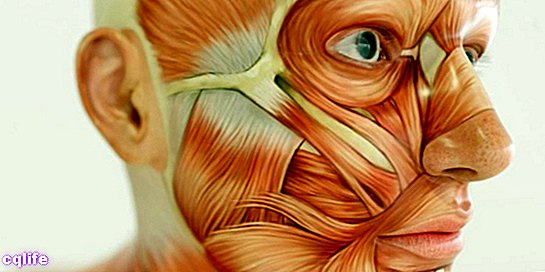- What is the muscular system?
- Parts of the muscular system
- Functions of the muscular system
- Diseases of the muscular system
We explain what the muscular system is, its parts and different functions. In addition, how it is classified and muscle diseases.

What is the muscular system?
When referring to the muscular system, we speak of the set of more than 650 different muscles that make up the human body, most of which can be controlled at will and that allow us to exert enough force on the skeleton to move us.
The muscular system of the human being is vast and complex, constituting 40% of the weight of an adult, also generating most of its body heat. With him osseous system (bones) and the articular (joints), constitutes the so-called locomotor system, in charge of movements Y displacements of the body.
The muscles that make up this system are in turn composed of cells with a high level of specificity, which gives them specific properties such as elasticity. These cells, calledmyocytes, can be subjected to intense stretches and compressions without putting risk (up to a point) its constitution. This is why muscle fibers are so strong and elastic.
Muscles are also electrically excitable, and this is how the nervous system controls them.
There are three essential types of muscles:
- Skeletal or striated muscles. They are called that because under the microscope they have striae, as well as a characteristic long shape. In addition, they are those that connect with the bones of the body and allow the displacement or movement of the extremities.
- Cardiac muscles. As their name implies, they are the muscles of the heart wall (myocardium), and they are striated muscles with precise characteristics, since they need to be interconnected in order to contract and expand in a totally synchronized way.
- Smooth muscles. They are also known as visceral or involuntary, since they are not committed to the voluntary movement of the body, but to its internal functions (autonomic vegetative nervous system). For example, the movement of the intestines or the digestive tract, or the opening or closing of the iris in the eye. They are easily recognized as they lack stretch marks like the previous types.
Parts of the muscular system

The muscular system is made up of a huge variety of muscles, among which we find:
- Spindle muscles. Those with a spindle shape, thick in the central part and thin at the ends, like those present in the upper and lower limbs.
- Flat and broad muscles. Present mainly in the abdominal wall, they mobilize and protect the lower internal organs.
- Fanicoid muscles. As their name indicates, they are fan-shaped, and two important examples are the pectorals (on the chest) and the temporal bones (on the jaw).
- Circular muscles They are ring-shaped, so they serve to close (when contracting) or open (when relaxing) various ducts, such as the anal opening through which we defecate.
- Orbicular muscles. Similar to spindle-shaped, but have a hole in the center, allowing other structures to be opened and closed. An example is the orbicularis muscle that is in our eyelids.
Functions of the muscular system

The muscular system is vital to the body, as it takes care of keeping things moving. For example, the heart is an organ that cannot stop pumping blood, as it would cause death.
Therefore, your muscles must be strong and designed for continuous exercise. In the same way, the digestive movements, from the trachea to the intestines, are muscular responsibility, or the respiratory ones.
Second, the musculature allows voluntary movement, which is the best way to deal with the environment for children. living creatures: allows us to mobilize the skeleton and move to change places, or use our limbs in a specific way and build food, caress our loved ones or defend ourselves from an attacker.
Even gestures as simple as moving our eyes or smiling are due to the specific action of some set of muscles in the body.
Diseases of the muscular system
Muscles can be affected by ailments of different kinds, such as:
- Tears Partial ruptures of muscle tissue that, although they can repair themselves over time, generally decrease motor capacity and are extremely painful.
- Cramps Painful and involuntary contractions of a specific muscle, due to extreme fatigue or imbalances in muscle chemistry.
- Atrophy. Due to prolonged lack of use, illness or major trauma, muscles can cease to function and become atrophied, that is, lose the volume of their tissue.
- Poliomyelitis. Produced by a virusThis disease really affects the nervous system, but by paralyzing the electrical impulses it causes an artificial atrophy on the musculature.
